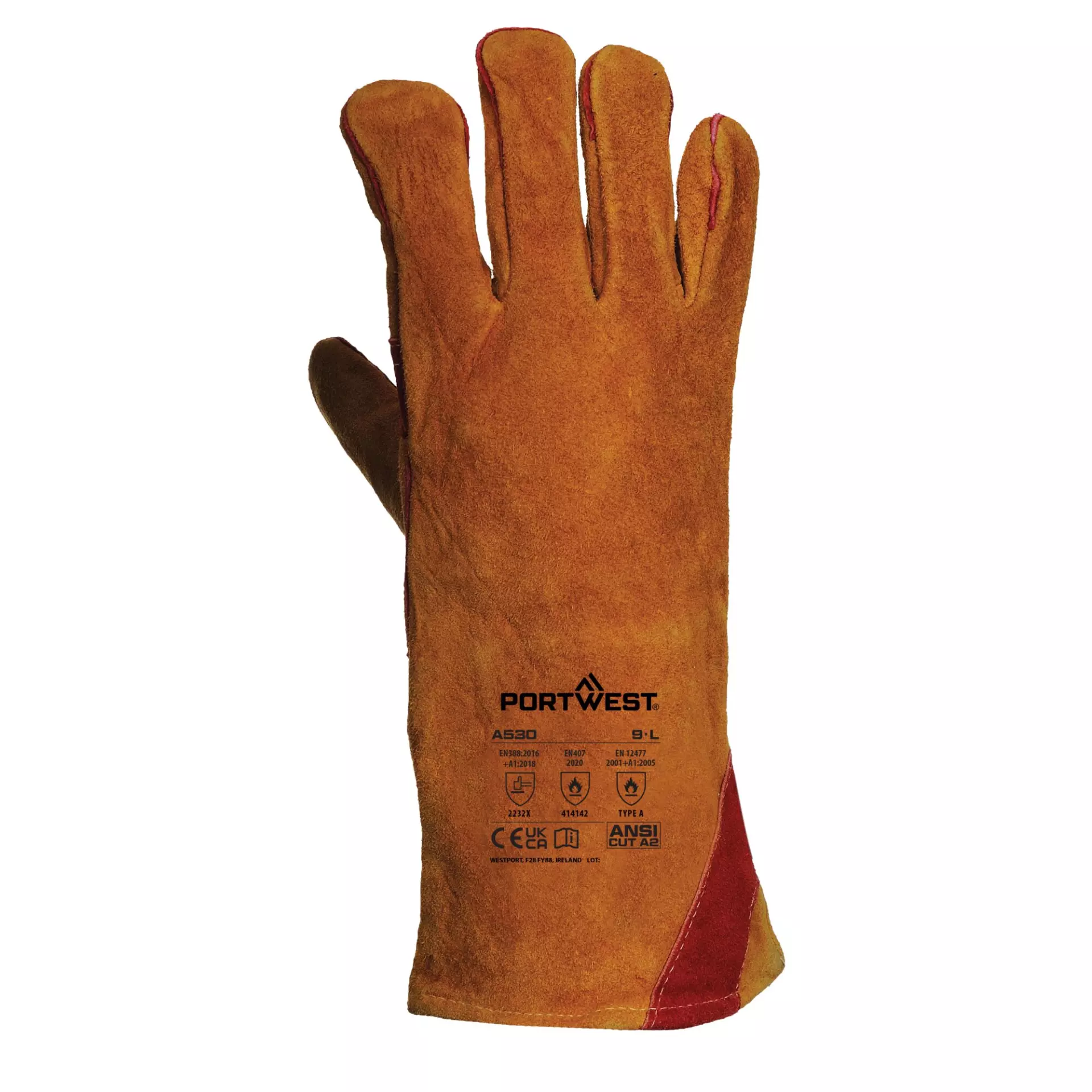
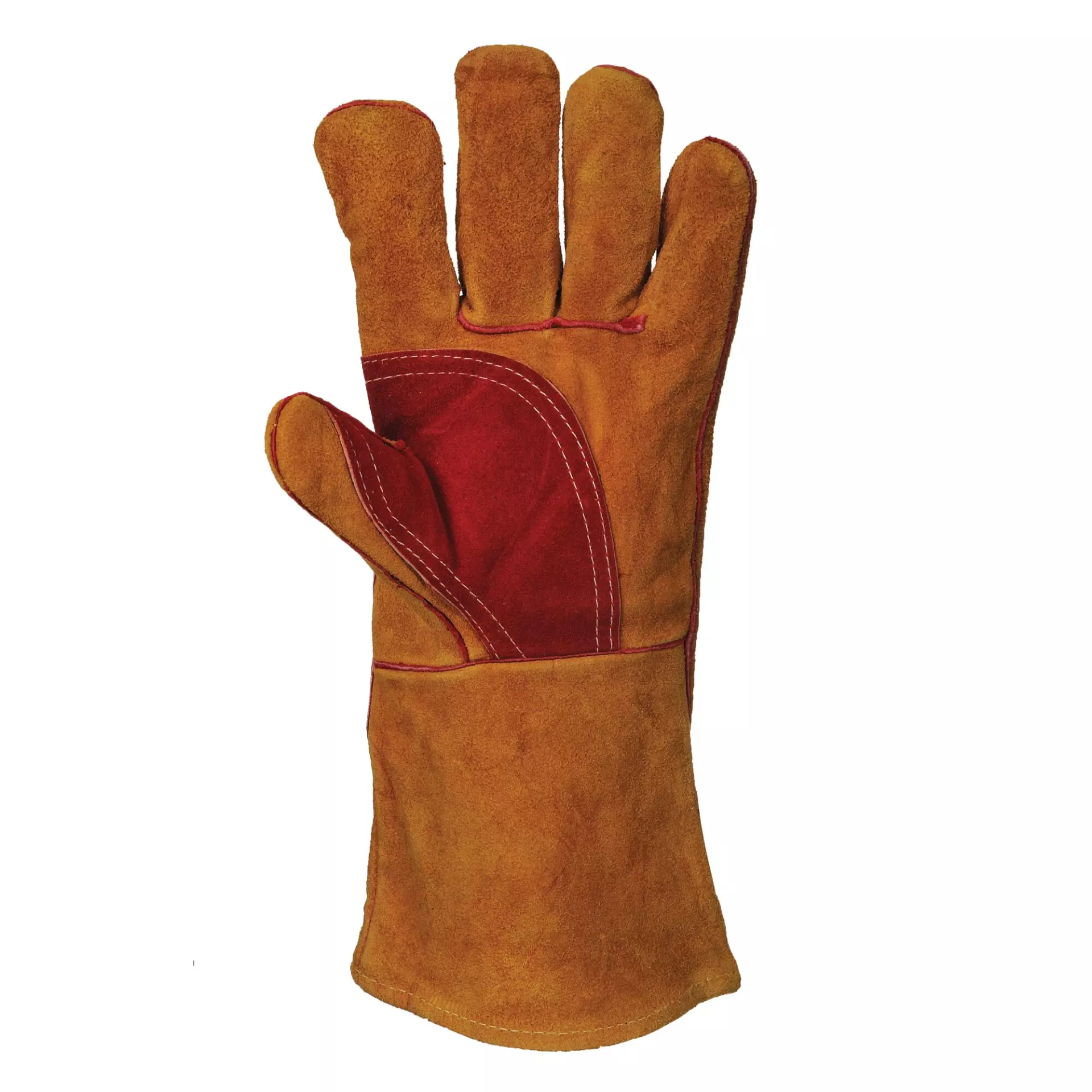
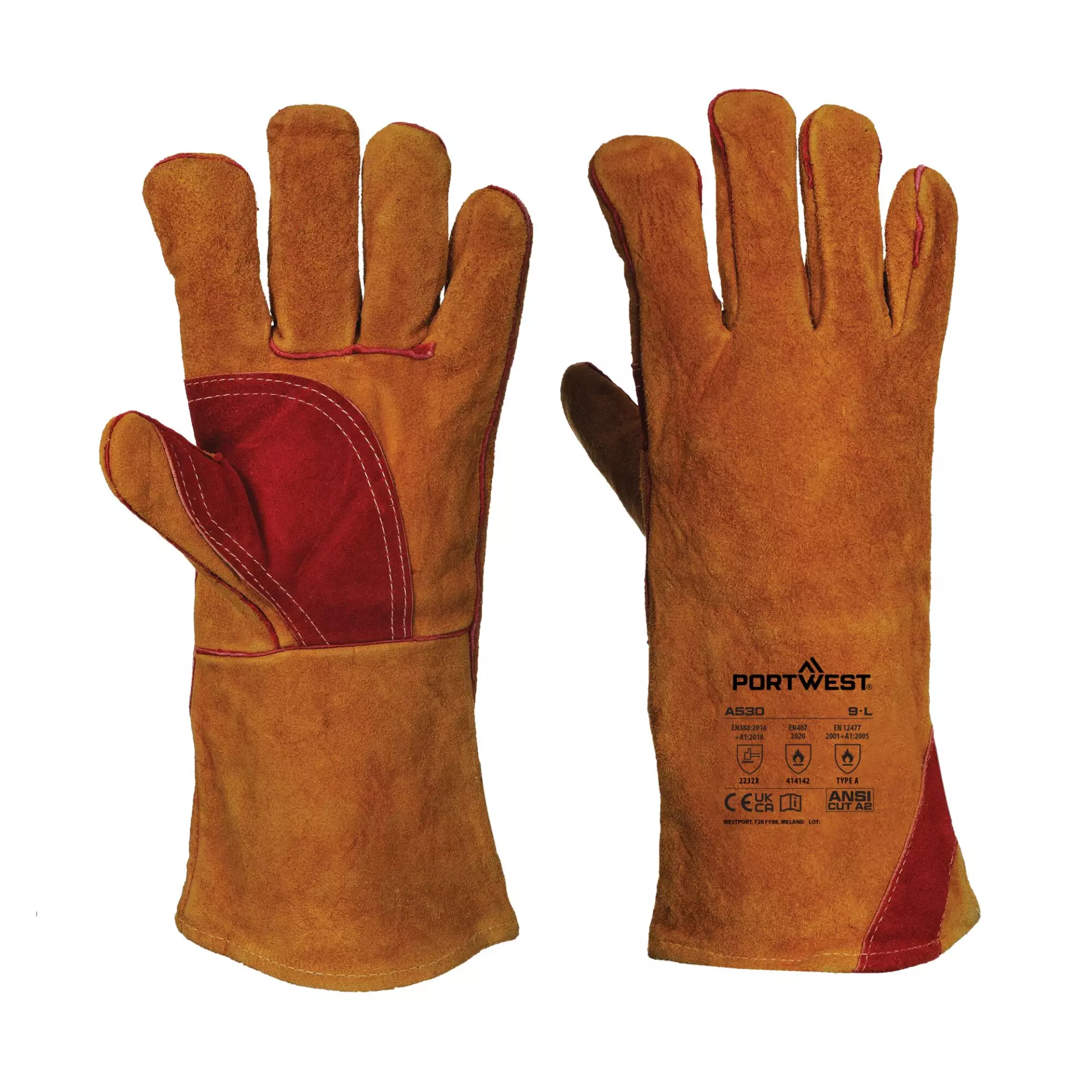
Features You'll Love
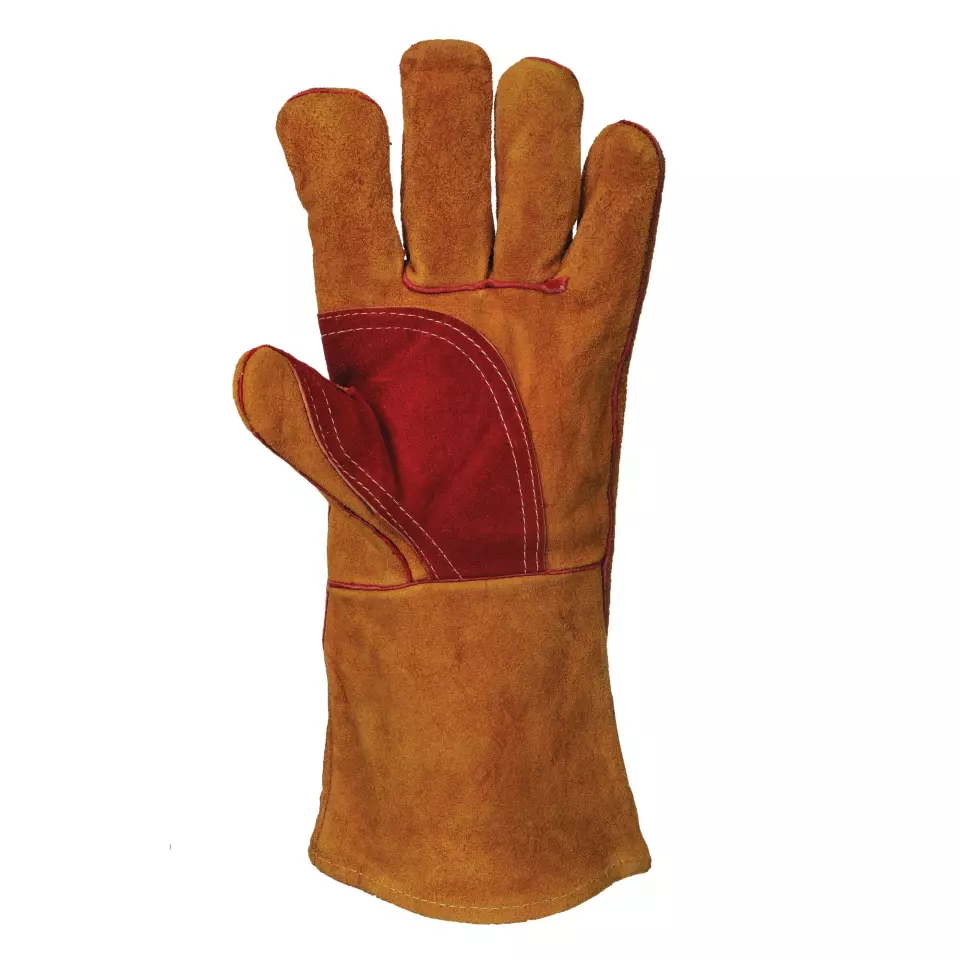
Glove Features · Reinforced Palm, Reinforced Thumb Crotch
Enjoy enhanced durability and protection where you need it most, extending glove life and improving grip.
Reinforced thumb crotch boosts durability and protection in high-stress areas, keeping your gloves strong for demanding tasks.
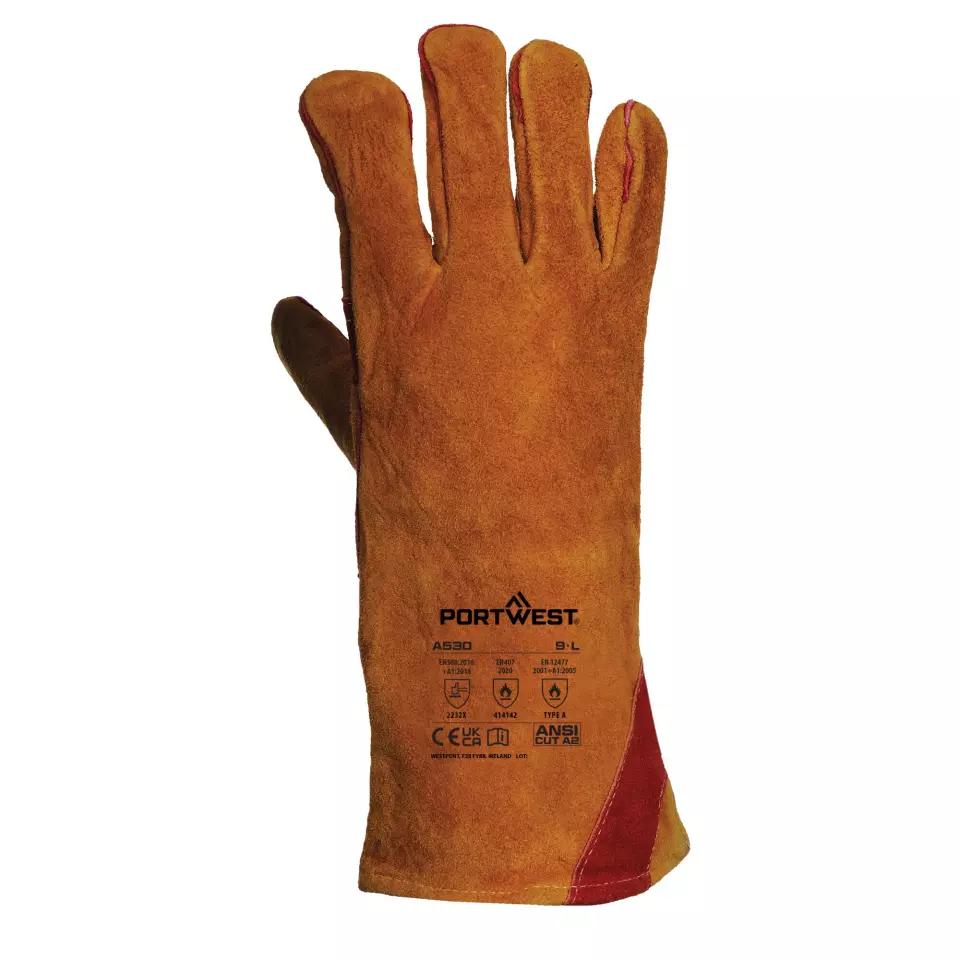
EN 388 · Tear Resistance Level 3, Puncture Resistance Level 2
EN 407 · Metal Splash Resistance Level 4, Burning Behaviour Level 4, Heat Contact Level 1
Offers strong resistance against ripping, making the material durable against snags and tears.
Withstands moderate force from sharp objects like heavy-duty splinters or wires.
Provides the highest level of protection against large splashes of molten metal, tested to resist amounts greater than 200 grams. This makes it essential for high-risk industrial jobs like foundry work and heavy welding.
Provides the highest level of protection against catching fire when exposed to a naked flame. After the flame is removed, the material will stop burning within 2 seconds and stop glowing within 5 seconds.
Provides protection when briefly touching hot objects. Certified for contact with surfaces up to 100°C for at least 15 seconds, offering short-term protection against burns from items like hot cookware or machinery parts.
Portwest
Reinforced Welding Gauntlet, Brown, 6 pairs
Reinforced Welding Gauntlet, Brown, 6 pairs
5 / 5
57,81 €
Price per 6 pairs
9,64 € / pair
Choose size
Shipping fee is 7,95 € for orders under 80,00 €
Features You'll Love

Glove Features · Reinforced Palm, Reinforced Thumb Crotch
Enjoy enhanced durability and protection where you need it most, extending glove life and improving grip.
Reinforced thumb crotch boosts durability and protection in high-stress areas, keeping your gloves strong for demanding tasks.

EN 388 · Tear Resistance Level 3, Puncture Resistance Level 2
EN 407 · Metal Splash Resistance Level 4, Burning Behaviour Level 4, Heat Contact Level 1
Offers strong resistance against ripping, making the material durable against snags and tears.
Withstands moderate force from sharp objects like heavy-duty splinters or wires.
Provides the highest level of protection against large splashes of molten metal, tested to resist amounts greater than 200 grams. This makes it essential for high-risk industrial jobs like foundry work and heavy welding.
Provides the highest level of protection against catching fire when exposed to a naked flame. After the flame is removed, the material will stop burning within 2 seconds and stop glowing within 5 seconds.
Provides protection when briefly touching hot objects. Certified for contact with surfaces up to 100°C for at least 15 seconds, offering short-term protection against burns from items like hot cookware or machinery parts.
Product description
This premium leather welding gauntlet features reinforced palm and thumb areas for enhanced protection in demanding welding applications. Constructed with full welting and para-aramid stitching throughout, it provides superior durability and heat resistance compared to standard models.
Product Features:
- Premium quality leather construction
- Reinforced palm and thumb area for additional protection
- Fully welted design
- Sewn with para-aramid throughout for enhanced durability
Standards:
- SATRA Technology Europe Ltd certified
- Test reference: 2777/25360-01/E00-00
- Performance ratings: (2232X), -413142 (A2)